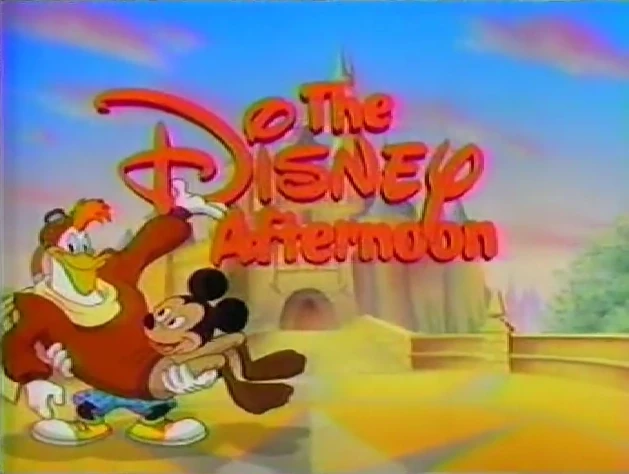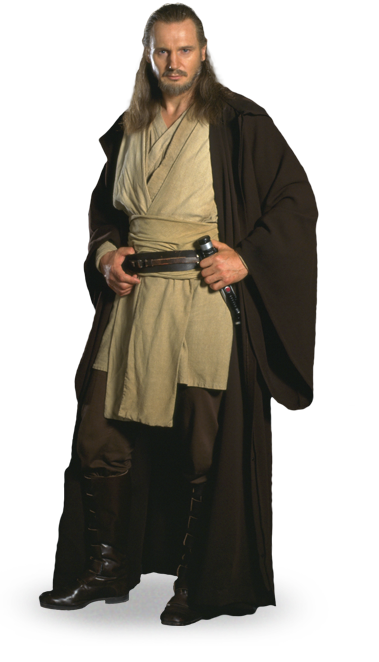Observer's Jasmine Lobe Interviews Artist Joan Jonas | Observer
To experience the work of renowned multimedia artist Joan Jonas is a bit like trying to articulate the origins of the universe. Her mediums span video, performance, sculpture, drawing, literature, found objects—and elements like wind, time, space and sound. Over the years, I’ve found myself wondering: What isn’t her work about? Indeed, Jonas has never stopped “exploring, learning and referencing,” though she overlapped forms from the beginning because, for her, they all related to each other like a poem. “How do you explain a poem?” Jonas asked me when we connected last month. “You can, but it’s difficult. It’s better to read it.”
Born in 1936 and based in SoHo for six decades, Jonas is a trailblazer in video, performance and installation art. For decades, she’s been revered internationally, but in the past year, she’s taken her hometown of New York City by storm. In 2024, the Museum of Modern Art held a stunning retrospective of her work, “Joan Jonas: Good Night Good Morning,” spanning over fifty years of the artist’s illustrious career. Around the same time, the Drawing Center presented an exhibit focused solely on her drawings—many of them depicting animals: owls, dogs, rabbits, fish and insects. They felt playful, even joyous. Most recently, her show “Empty Rooms” at Gladstone Gallery explored themes of loss and revival—stitched paper stretched across empty sculptural frames, accompanied by video, music and fifty drawings of leafless trees that somehow seemed full of life.
Though Jonas began as a sculptor, her artistic trajectory shifted in 1970 after a trip to Japan. She returned to New York with one of the earliest portable video cameras and was transfixed. Her first video piece, Wind (1968), captured her artist friends on a snow-covered Long Island beach, wrestling against the elements on one of the coldest day of the year. In the creation of that piece, she was influenced by the late 1960s dance movement, where everyday gestures became a kind of choreography. Organic Honey’s Visual Telepathy (1972) marked the first time Jonas performed in her own video. Dressed in erotic clothing and wearing a mask, she inhabited the persona of a seductress. “It was the interaction between the camera and the body,” she told me, “and how it could be used in different situations and how it was recorded.” What struck her most was the immediacy—the fact that you could see yourself on screen in real time while performing. “That was kind of revolutionary for everybody at that moment.”
Last June, I visited Jonas’s MoMA retrospective with my mother, a painter. Together we wandered from room to room, soaking up wild creativity that often felt less like a museum and more like an unfolding dream. I was particularly moved by Jonas’s work with mirrors, inspired by Borges’ Labyrinths. Mirror Piece I (1969) and Mirror Piece II (1970) featured performers holding long slabs of mirrors in a choreographed sequence, reflecting the audience back on itself—an early meditation on the power of the gaze, gender hierarchy, fragmentation and spatial perception. One of the pieces I could hardly tear myself away from was Volcano Saga (1989), a video adaptation of a thirteenth-century Icelandic saga featuring Tilda Swinton as a woman whose dreams foretell future love and loss. Swinton’s singsong voice weaves through surreal visuals—Swinton superimposed over sweeping Icelandic landscapes that feel like characters themselves. I felt like I might fall into the screen.
I first heard Jonas’s name through my parents’ longtime friend, artist Gwenn Thomas. Thomas is close friends with Jonas, has photographed much of her early work and has appeared in her pieces. Jonas had always felt like a mythic presence. When we finally spoke, she was warm but precise, direct without ever being pinned down. In conversation, as in her art, she resisted easy definitions—rearranging sentences, opening new possibilities even as one might try to contain her meaning.
I loved “Empty Rooms.” According to the exhibition text, the show was about loss and empty spaces and your process of revival. How did the concept come about?
I got the idea because at my age, your friends start to disappear. Around the time of the opening of my show at MoMA, several people passed away. I don’t want to refer specifically to that, but I thought when each person leaves, there’s an empty room. It just came to me like that. When I came back from Canada last summer, I began to think about what an empty room would be. The shapes—I made them on a small scale (about a foot in diameter), and then they were enlarged. The only way I could do it was to make a small model first and then take it to a place where they make steel frames. Those are what you see in the space. I was interested in working with form. I tried to make shapes and forms that I had not made before. I didn’t want them to look like lamps or things I’d already done. I wanted them to be new.
Tell me about the drawings of trees on the wall. I noticed they didn’t have leaves.
Other people noticed that, too. I got the idea because I have this Japanese paper I made them on and then crinkled. (The forms are made out of another kind of Japanese paper that we sewed onto the frames.) I love trees, and I love the forms. I find them fascinating. I am probably going to go on drawing trees after this, because I like it when the leaves are gone. You see the framework, you see the structure, you see the branches. That’s what I’m interested in. And it also has to do with going into another phase. I mean, the leaves always come back. Do you see what I mean?

Absolutely. Even though they didn’t have leaves, they had so much movement. And with the crinkled paper, it almost felt like the ocean to me. Let’s talk about the video in the background. It came from the 2015 Venice Biennale’s “They Come to Us Without a Word”?
The video wasn’t shown like that in Venice. All of my performances are structured differently. They have the same imagery and references, but they’re structured for a different kind of audience. When I did the performance in Venice, a couple of the performers couldn’t be there, but when I came back to New York and we did the performance, I was able to rework the video background. So the performers, myself and my editor worked on it for quite a number of days, putting that together in relation to the shadows and the reflections and the windmill. I don’t usually explain my pieces, but the windmill has significance in relation to the idea of loss and things going on and on.
I also noticed hands reaching, almost like they were trying but failing to grasp.
There was no inherent meaning when we developed those hand movements and the use of some of the props. It’s how it all adds up. I like it that you interpret it in your own way in relation to the idea of empty rooms or what’s lost and so on.
Even though the show is about loss, I found it very peaceful.
I really didn’t want it to be sentimental or about the sadness of loss.
Then there was the accompanying music, which you collaborated on with jazz musician Jason Moran. How did that come about?
I met Jason in 2004 or 2005, and we began working on a piece called The Shape, the Scent, and Feel of Things. We worked at Dia Beacon for six weeks developing the score. I had the script, the ideas, the text and the projections, and Jason came in and played music. My movements were developed in relation to Jason’s playing live on a grand piano, and we’ve worked together that way a number of times. This time, I asked Jason to send me a few clips—pieces of music he already had—and I chose the music from them.
I was delighted by the whale sculpture called Whale from Myles From Nowhere by Myles Kehoe, an artist in Nova Scotia. I understand you’ve spent a lot of your summers there?
I have a friend in Nova Scotia who has an antique store, and I get many props from him. I think that he got all the pieces for that, including a buoy and the rake and so on, and then gave it to a friend of his to put it together. Usually, I collect folk art or what you could call outsider art. I hate to use these words, but I do collect objects like that. This is one of those objects I found in Canada last summer, actually at the same time that I got the idea for “Empty Rooms,” and it was put in at the last minute. I just thought it added—I hate to put it in words—a content. If we think about whales and what’s happening with whales… that’s all I’ll say.
Your work spans so many mediums. How do you explain that expansiveness?
I think it’s just time—from the very beginning, starting with art history and studying the history of art. I never thought of dealing with the vastness, but in the beginning, the first writer I dealt with was Borges. And Borges writes about the universe and about the infinite aspects of the universe. For instance, for “Empty Rooms,” I take separate parts and put them together. I used to say it was like cooking. I don’t say that anymore, but it is like cooking. When you take two elements—two ingredients—you put them together, and the third ingredient forms a chemical reaction in a way. It’s a kind of collage method, and then it’s not a collage anymore because it’s merged into one piece.

In 2024, you had a retrospective at MoMA that overlapped with a show at the Drawing Center. What was it like walking through the history of your work?
It was just simply thrilling for me. I don’t think about, “Oh, this is my history.” I’m just happy to see them out there. Art is about communication, and so it’s wonderful to be able to communicate and have that exchange with an audience.
One of the things I loved about the Drawing Center show was how the animals had such personality. Were you playing when you made those drawings?
There are two different kinds of drawings. The ones I do in performance, which are done quickly, and in relation to a particular piece. One of my favorite examples was when Jason played one of my favorite pieces of his, and I was making bird drawings. They’re very simple—one after another, very fast—in relation to Jason’s music. The other kind of drawing I make in my studio, like the owl drawings, and I’m very careful about them. Those are very studied and slow. I’m trying to make a drawing that I like.
I read you found a rock that you used to trace your dog’s head?
I have templates, so I have different things to inspire drawings, like the rocks. I collect rocks in Canada, actually, and my collection includes these shapes that look like animals.
I’m curious how you entered the art world. You worked at Dick Bellamy’s gallery. Did you meet a lot of artists?
I was in that world, as we all were. Gwenn was in that world. They were my friends. I went to Columbia Graduate School and got my master’s in one year, and then I moved downtown. I had gone to a school in Vermont where David Whitney had gone, and he worked for Dick Bellamy. One day I walked into Dick Bellamy’s Green Gallery, and there was a receptionist job, which I took immediately. David Whitney arranged it for me. He was a visionary, Dick Bellamy, and he showed many people that became important later on. I learned a lot about what was going on. My education continued from art history to what was going on in that gallery and just being around downtown. I worked there in ’65, and I didn’t start showing until five years later.
What led you to take that leap and start showing your work?
When I thought I was ready. It’s hard to describe. It was when I thought I had something to show.
Were you bursting to put your ideas into the world or was it something else?
I wasn’t exactly bursting. The first thing was that the dancers in the sixties were all giving workshops. I had never performed in public, so I took the dance workshops. It wasn’t just Trisha Brown—it was Yvonne Rainer, Steve Paxton and Deborah Hay. Trisha had a workshop where you could bring something in and show it to a very small group of people, and experiment in that way, and gradually develop a kind of language. Yvonne was more about running around the room, doing more physical exercises. They all taught differently. That’s how I made a slow transition into the kind of work I do now. Later, when I went to Japan and bought a video camera, that was the next step. I began with mirrors. I was inspired by Borges, and his writing really got me into making my own work. The mirror became my main prop and metaphor at that time.
I know you don’t go by theory, but Mirror Check seems feminist.
It did have to do with feminism. There was a wave of feminism in the late 1960s and early ‘70s. It was very important for me, as it was for many other people—and for men, too. It was a reference to feminism, but not specifically. It was the mirror, the idea of looking at one’s own body and having control of the gaze.
I read that you were shy, so I can only imagine the courage it took to stand up there naked.
It wasn’t easy. Fear is a big stimulator. I used to get terrible stage fright. I no longer feel that way, but in the very beginning, definitely. And if I was afraid of something, I thought, “Okay, I have to do it.” Fear was an inspiration and a push.
It’s amazing that you saw fear as a motivator because some people shut down.
It’s in my work, this phrase, “What am I afraid of?” I did a little piece with children, and I said to them, “What are you afraid of?” And they said, “I am afraid of…” What are you afraid of? I like that phrase and that question.
I read that one of the reasons you got into performance and video was because sculpture and painting were male-dominated fields, and there was an opening in these newer areas?
At that time, yes… it was an opening in a way, but it was also just the obvious place to go for many reasons. We don’t have that same moment at all now.
You started out doing happenings and performances with Richard Serra, who was a minimalist. This is a question from my sculptor father: is your work a rejection of minimalism?
I wouldn’t put it that way, but yes. I was trying to get away from minimalism in the very beginning, and I was with Richard. He’s a brilliant artist, and I loved his work, and he’s a great guy and brilliant. But I wanted to get away from minimalism, frankly. So I’ll just say yes.
You grew up in New York and New Hampshire—did those places shape you? I read you felt like an outsider growing up because you moved around a lot.
I grew up in New York until I was about 12, and then we moved to Long Island. Every summer, until I was 17, we went to my grandmother’s house in the mountains of New Hampshire, which was very beautiful. But New York City was always the center. I also went to five different schools before I graduated, then went to college, then the Museum School and then Columbia. I was always new to the class—an outsider. I think that helped. It has a relationship to how I make art. And it’s not bad to be an outsider, actually.

Did you ever have a moment in your career where you thought, “Wow, I’ve really made it”?
When you say, “I’ve made it,” then what do you do? No, I never thought that. But after the MoMA retrospective, I thought, oh, finally. People didn’t know my work for many years. I mean, they knew me. They knew individual things. I had support. All those years, I called myself an artist’s artist because the artists were the ones who came to see my work and who supported me. But people on the outside didn’t know my work, which was, not sad, but hard for me. And so when I had the show at MoMA, finally in New York where I live, my work was seen. I wouldn’t say I’ve made it, but I was happy about it. And the same with the Drawing Center show.
Let’s talk about the old New York. I love the video Songdelay, shot in 1973 in an empty lot on the Lower West Side off the Hudson. The boat passing by became another character, and then there was the clapping of bricks to create a delayed sound.
I love New York. I used to live on Charles Street, and then these lots opened up in SoHo so I moved here. That was amazing, to have a space to work like that. These were very rough places. It was a dangerous neighborhood, but it was an interesting and exciting time for artists. Before, there were these big holes—I call them holes—where you could work in these empty lots, torn-down buildings looking old. It all got gentrified. That landscape interested me. I wouldn’t necessarily want to do a performance in the present landscape. I did this one piece in the ‘70s where I just decided to take my props—my cones—and go down to Wall Street. I asked Pat Steir to come with me, and we took the cones, and she and I were dressed in dresses. We improvised. A guy named Andy Mann had a camera, and he recorded us. It was beautiful. You couldn’t do that now. You’d have to get permission. That was very inspiring for me.
Did you want to be an artist when you were a little girl?
My father wanted me to be an artist. I have to say, it takes a certain kind of confidence to say, “I want to be an artist.” I didn’t have it growing up for some reason. I liked to draw. My father, who was a failed writer, put that energy into me. It really was my mother who didn’t want me to be an artist. She thought it was unstable, that I wouldn’t be happy and that I wouldn’t have any money. My father was very different. So it’s not that I wanted to be an artist—I thought of being an artist. But it took me a long time to have the confidence to say, “Okay, I’m an artist.” I’m sorry my father didn’t live to see what I do. I’m really sorry about that. I would’ve loved to have him know what happened, but you can’t have that.
You have a great love for ecology, and you’ve made pieces involving the ocean. With so many animals on the verge of extinction, it seems like an homage to them.
I find it very painful what’s going on now in the ocean. For instance, the reason I started focusing on ecology, after all those years of working outdoors and being inspired by nature, was that I started working with a Halldór Laxness piece called Under the Glacier. He’s an Icelandic writer. He’s very poetic, a wonderful writer, and he writes about nature. But when I started working with Under the Glacier, I immediately thought, well, that was written in 1968, and now glaciers are melting. That’s what led me into that area, then I focused on that aspect of the world in relation to my world.
You layer and repurpose videos for different pieces. Is there something specifically that draws you to doing that?
Sometimes I like to take things from the past and juxtapose them with something in the present. Like the piece I made with the Halldór Laxness idea about the world being underwater and the melting ice. In 1972 or ’73, I made a video called Disturbances, which I shot in a swimming pool in the country, someplace in Pennsylvania, with myself and two other women dressed in white nightgowns, swimming underwater. I’m recording it, and you can see the reflection on the water. Later on, I put parts of that video into the piece about climate change, Reanimation. That changes the little clip I took from the past. I do that sometimes, like I did just now for “Empty Rooms.”
How do you come up with titles for pieces? Is it intuitive?
It is intuitive. I try to think about what the piece is about, what the piece is. Sometimes, like with “They Come to Us without a Word,” the title just comes to me. And Reanimation came from the book, so different ways.
“Good Night Good Morning” is such a beautiful title.
That had to do with a video I made. I got up in the morning and said, “Good morning” to the TV. At night, I said, “Good night” to the camera. That was when I had my Portapak. “Good Morning, Good Night.”
I love the wind piece—your very first video. What was it like to have wind be another character?
It was kind of magical. I didn’t know there was going to be so much wind that day. I made that piece indoors and had simulated wind with fans, although nobody knows that. So it was serendipity that the wind came up that way. And then it became part of my work and also one of my characters. The wind is always there. If it’s windy, I really like to go out, because the wind animates things and changes them and transforms things. It’s a force.
Gwenn Thomas said in Joan Jonas: Good Night Good Morning, “It’s like Joan is the source. She’s like the sun with different spikes coming out, a non-linear progression. She goes back to the source and comes out differently.” I thought that was beautiful.
Yes, I like that, too.











